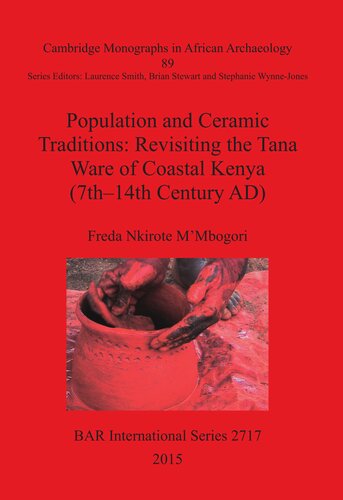

Most ebook files are in PDF format, so you can easily read them using various software such as Foxit Reader or directly on the Google Chrome browser.
Some ebook files are released by publishers in other formats such as .awz, .mobi, .epub, .fb2, etc. You may need to install specific software to read these formats on mobile/PC, such as Calibre.
Please read the tutorial at this link: https://ebookbell.com/faq
We offer FREE conversion to the popular formats you request; however, this may take some time. Therefore, right after payment, please email us, and we will try to provide the service as quickly as possible.
For some exceptional file formats or broken links (if any), please refrain from opening any disputes. Instead, email us first, and we will try to assist within a maximum of 6 hours.
EbookBell Team

5.0
98 reviewsThis research is a departure from the traditional archaeological pottery analysis in Kenya, where emphasis has been on decorations and forms. It uses a technological approach to offer additional information on Bantu pottery. Pottery decorations and forms are still powerful instruments in defining the spatial and temporal distributions of prehistoric populations, but the ability of these attributes to mark social boundaries is limited by their obvious visibility on the finished product. Whilst this explicit visibility is an advantage for archaeologists who seek to explore temporal and spatial distributions of different wares, it is problematic, since it is possible for socially, ethnically, and linguistically distinct communities to copy from each other, making salient pottery features unreliable indicators of social boundaries. Therefore, this study emphasises the production stage, which is not as obvious on the finished product and must be learnt by apprenticeship only through kinship.This study sought to establish the social boundaries for makers of Tana ware; an Iron Age pottery attributed by some to Bantu speakers, whilst others attribute it to Cushitic speakers. Chaîne opératoire was used as an analytical tool for archaeological data collected from Manda and Ungwana site assemblages. Ethnographic reference data was collected from Cushitic and Bantu speakers from the Coastal and Highland regions of Kenya. Ethno-historical data was derived from library resources, while experimental data were obtained from the field.